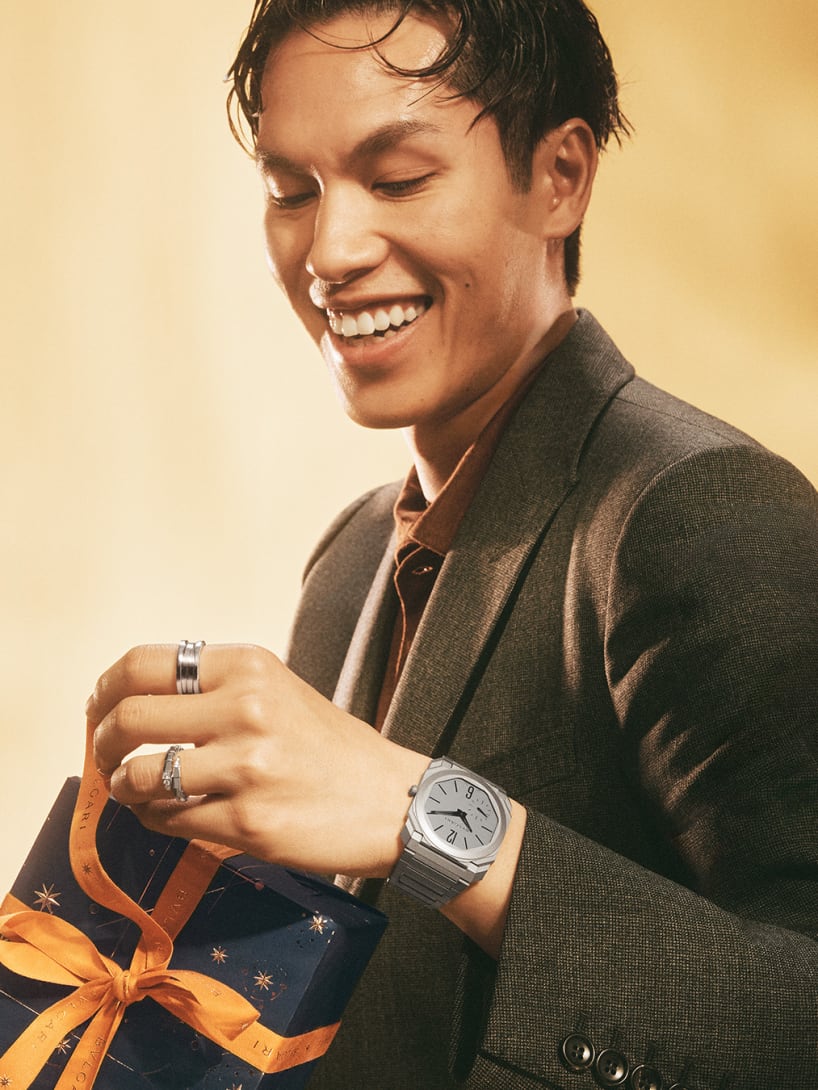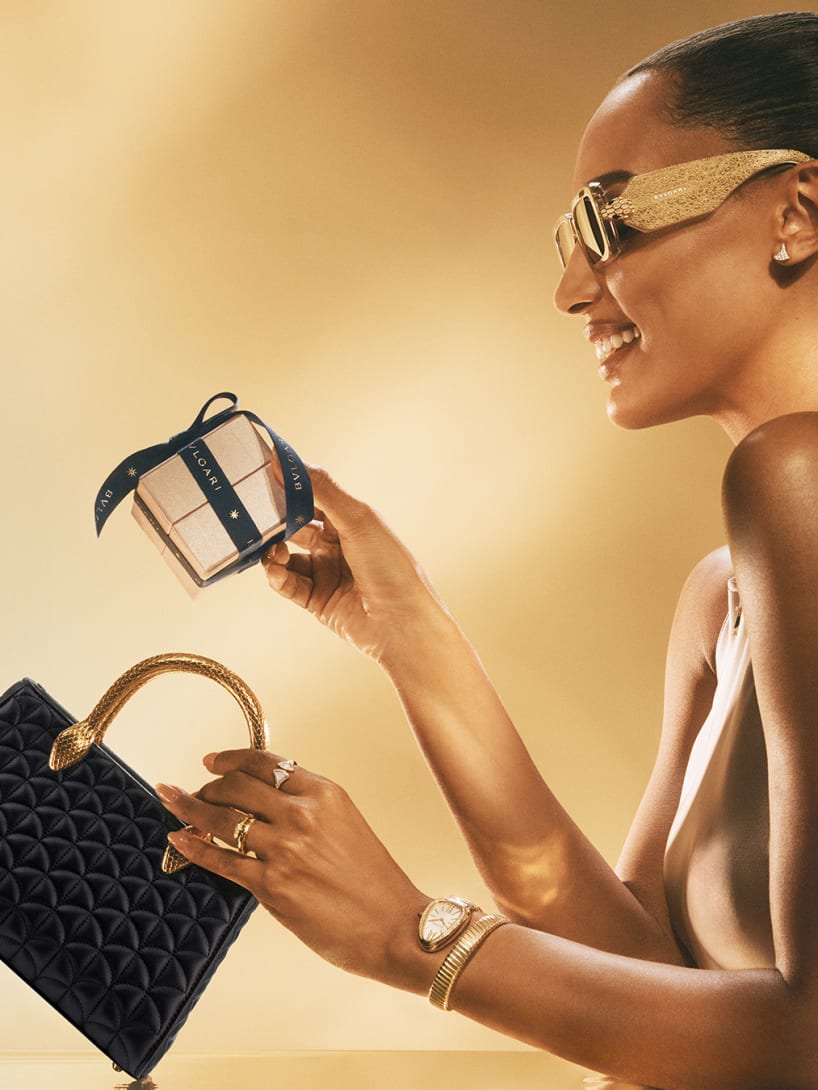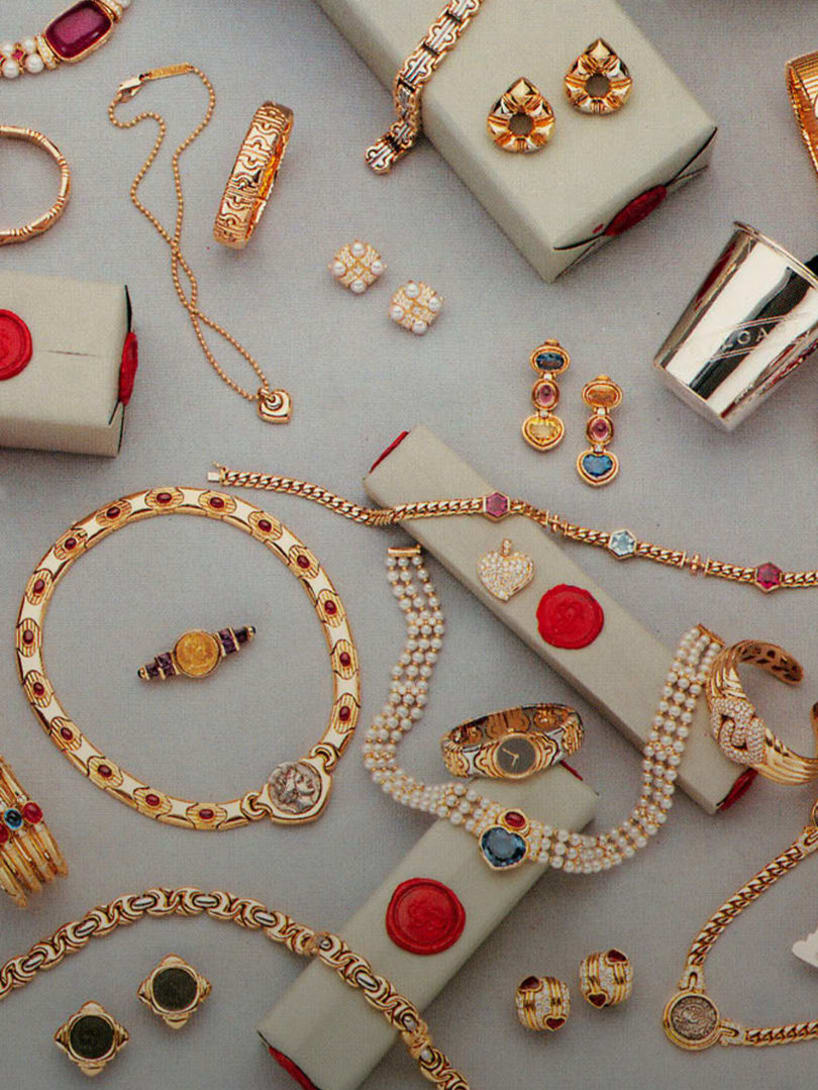
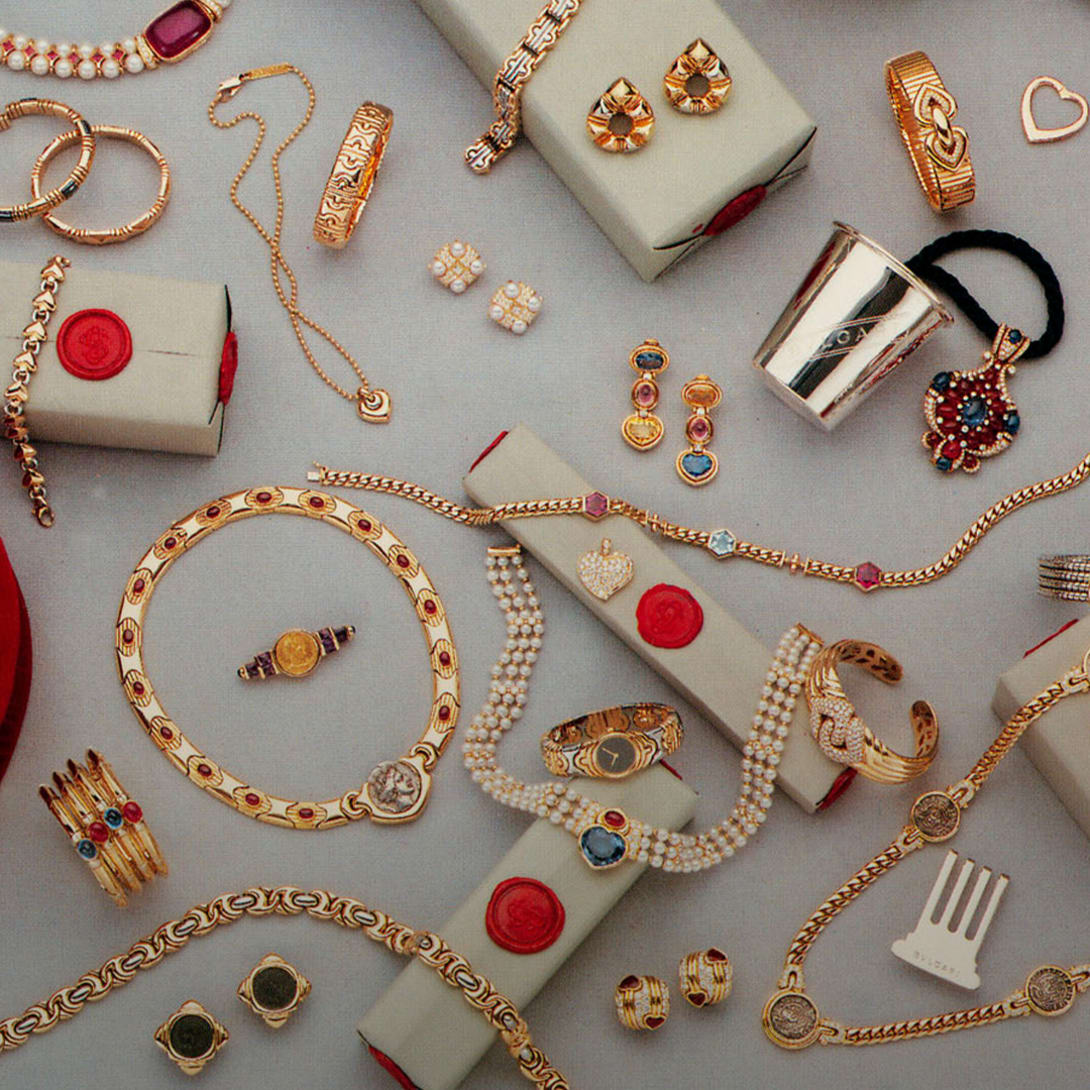

1980s: Modular innovation for the modern lifestyle
The 1980s were a decade of continued international expansion for Bvlgari, with new store openings in Asia, the United States, and key European locations like Milan, St. Moritz, and London. Sensing a shift in social structures and women’s roles in society, Bvlgari pioneered the concept of modular jewelry.
This approach involved the repetition of distinctive design elements interchanging in endless combinations, leading to versatile wearable collections. The models ranged from luxurious diamond-encrusted chokers to more accessible options combining gold with steel or hardstones. These creations catered perfectly to the dynamic businesswomen of the 80s, offering jewelry that was both a status symbol and adaptable to various occasions and times of the day.
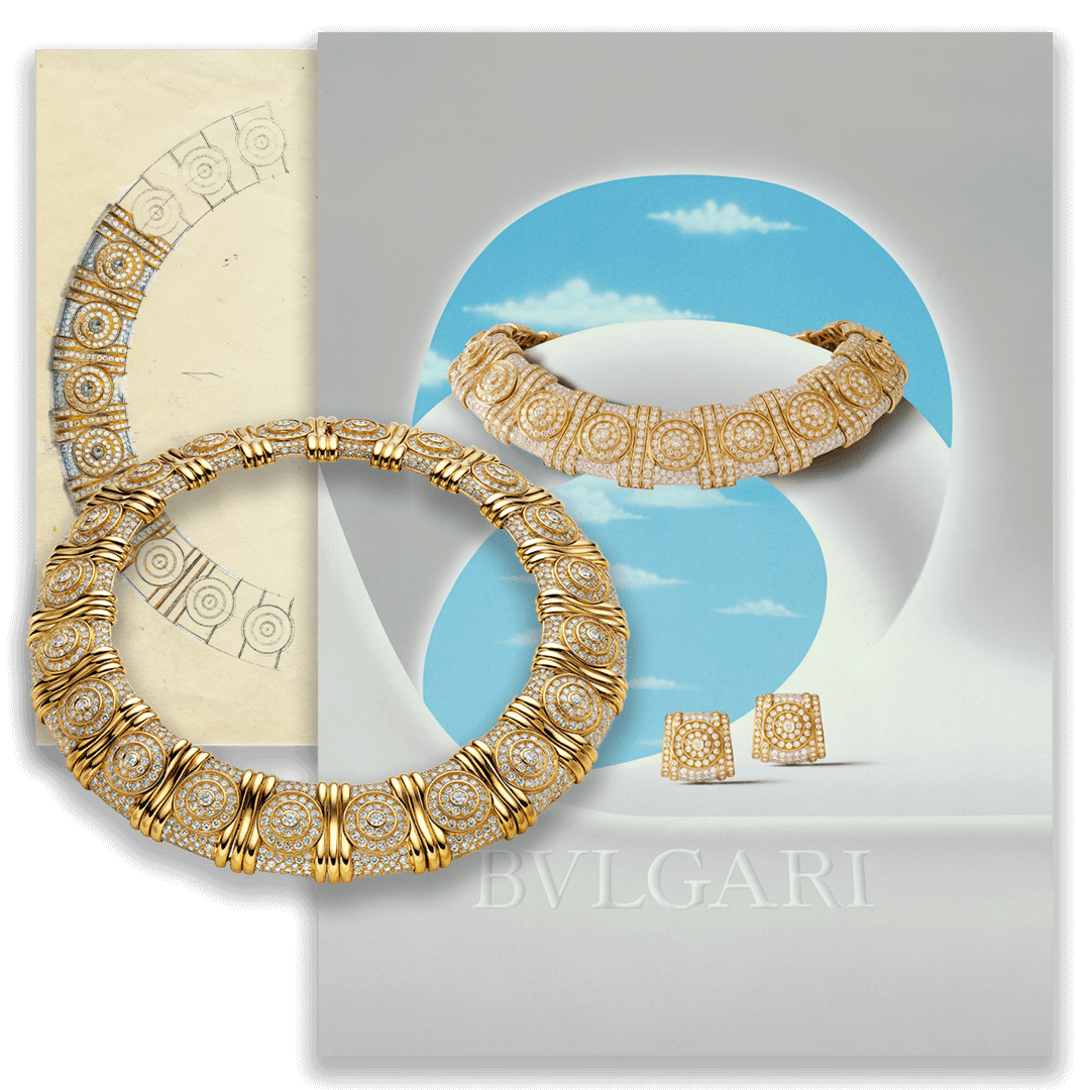


Advertising campaign Feminine Dream, 1989-1991. Diamond parure, 1988. Bvlgari Historical Archives



Advertising campaign Feminine Dream, 1989-1991. Diamond parure, 1988. Bvlgari Historical Archives
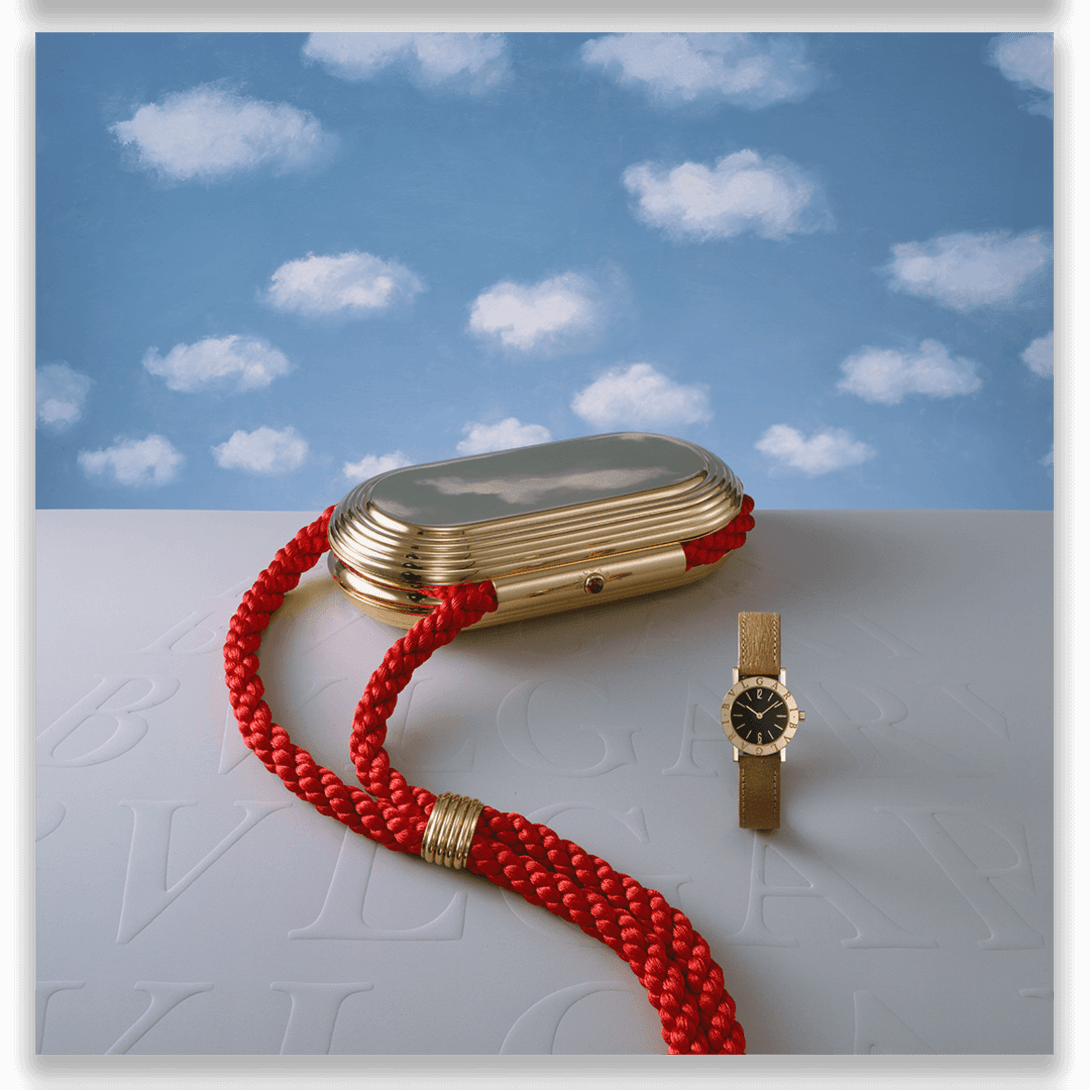


Advertising campaign Bvlgari Dream, 1981-1989. Bvlgari Historical Archives



Advertising campaign Bvlgari Dream, 1981-1989. Bvlgari Historical Archives
The versatility was also enhanced by the use of silk cords that could be mounted on jewels or precious evening bags, interchangeable and adaptable to the color of the wearer’s outfit.
The first modular iconic collection from this era was Parentesi, featuring a distinctive parenthesis-shaped metal element inspired by a detail from Rome’s pavements. Parentesi – followed by other successful modular collections – became widely recognized and imitated, epitomizing Bvlgari's ability to innovate while remaining true to its heritage.
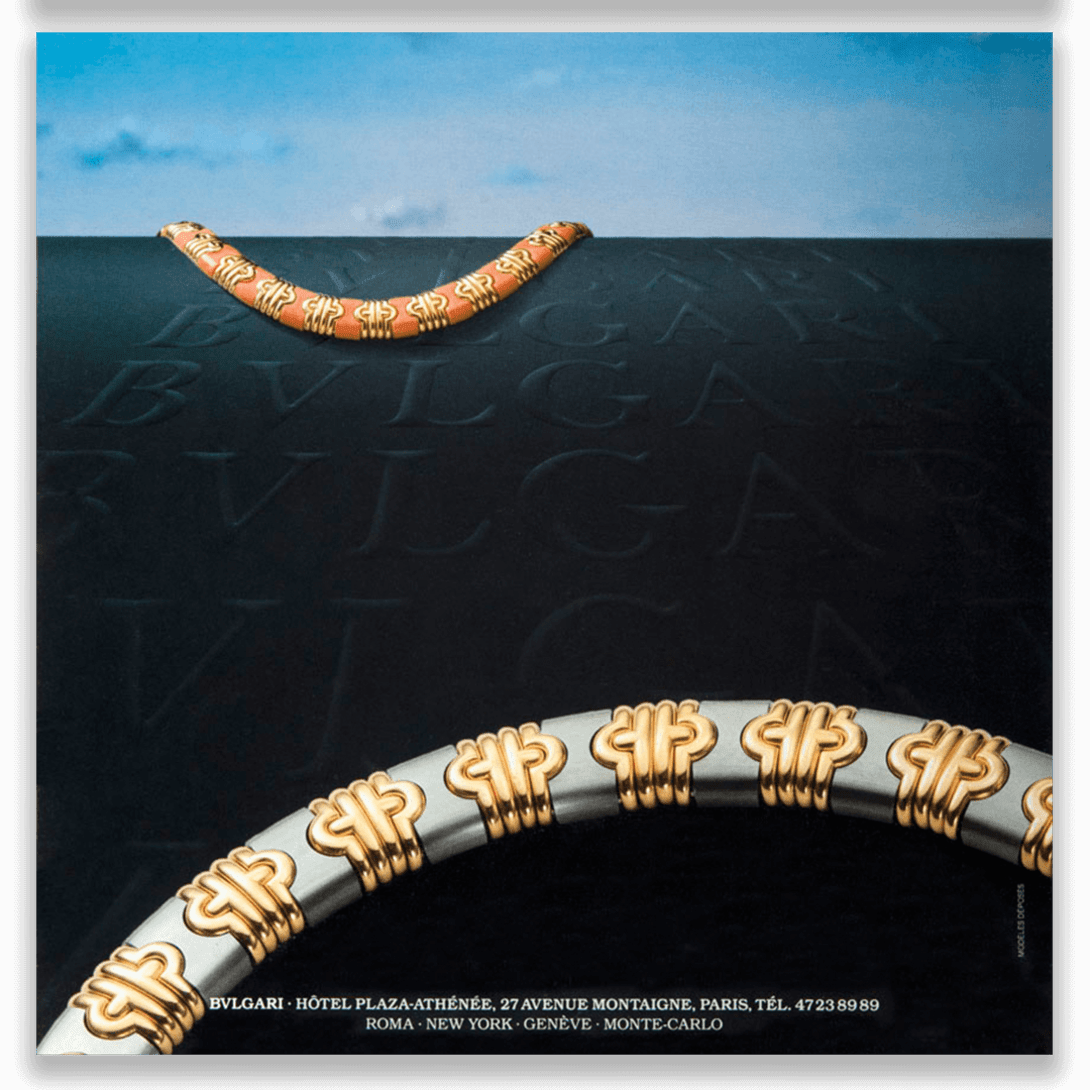


Advertising campaign Bvlgari Dream, 1981-1989. Parentesi necklaces, 1980s. Bvlgari Historical Archives



Advertising campaign Bvlgari Dream, 1981-1989. Parentesi necklaces, 1980s. Bvlgari Historical Archives


